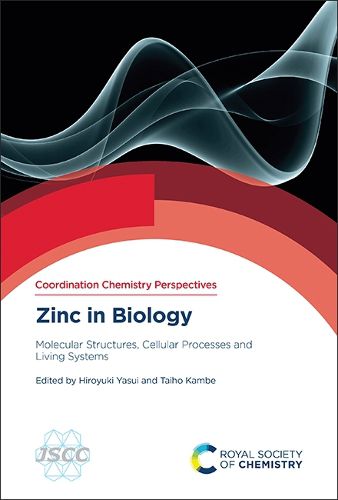Readings Newsletter
Become a Readings Member to make your shopping experience even easier.
Sign in or sign up for free!
You’re not far away from qualifying for FREE standard shipping within Australia
You’ve qualified for FREE standard shipping within Australia
The cart is loading…






Heavy metals essential to organisms are termed "biometals". Bio-inorganic chemistry deals with the functions of biometals in vivo at an atomic to molecular level, while cellular regulation of biometals such as absorption and transport has been investigated in cell biology. Although these research fields have independently developed and matured, interdisciplinary information across these fields is required for a comprehensive understanding of the roles of biometals at atomic to molecular, cellular and organism levels.
This book highlights the latest progress in zinc biology, from its chemistry to its association with diseases. Zinc is the second most abundant trace metal in living organisms, playing a crucial role in many biological processes. It functions as a catalyst in enzymatic reactions, a structural component in proteins, and a signalling molecule in cellular pathways. Zinc homeostasis is tightly regulated by proteins involved in absorption, storage, transport, and utilization. Disruptions in homeostasis are linked to various diseases.
Resulting from a 5-year project on Integrated Biometal Science in Japan, this book not only documents the latest research but also fills a gap between chemical understanding and our real life.
$9.00 standard shipping within Australia
FREE standard shipping within Australia for orders over $100.00
Express & International shipping calculated at checkout
Heavy metals essential to organisms are termed "biometals". Bio-inorganic chemistry deals with the functions of biometals in vivo at an atomic to molecular level, while cellular regulation of biometals such as absorption and transport has been investigated in cell biology. Although these research fields have independently developed and matured, interdisciplinary information across these fields is required for a comprehensive understanding of the roles of biometals at atomic to molecular, cellular and organism levels.
This book highlights the latest progress in zinc biology, from its chemistry to its association with diseases. Zinc is the second most abundant trace metal in living organisms, playing a crucial role in many biological processes. It functions as a catalyst in enzymatic reactions, a structural component in proteins, and a signalling molecule in cellular pathways. Zinc homeostasis is tightly regulated by proteins involved in absorption, storage, transport, and utilization. Disruptions in homeostasis are linked to various diseases.
Resulting from a 5-year project on Integrated Biometal Science in Japan, this book not only documents the latest research but also fills a gap between chemical understanding and our real life.